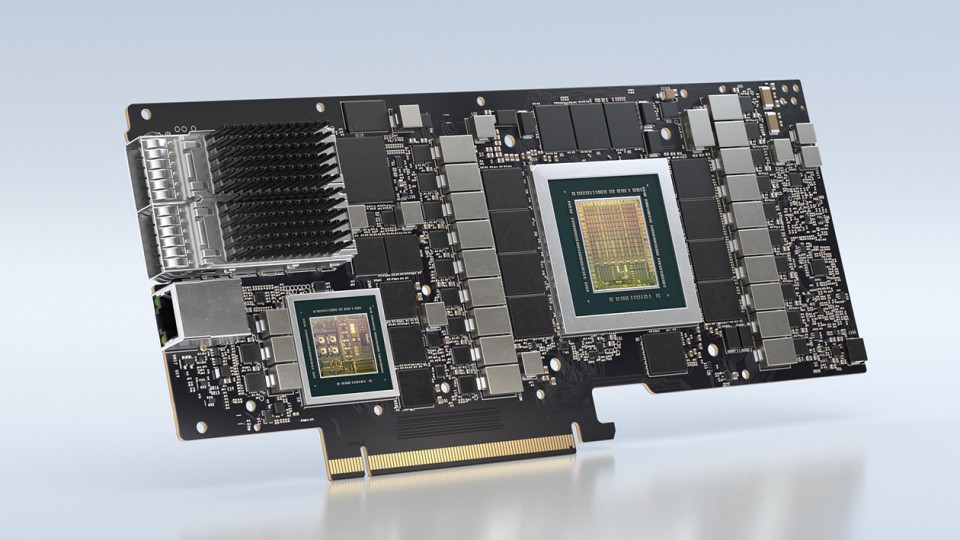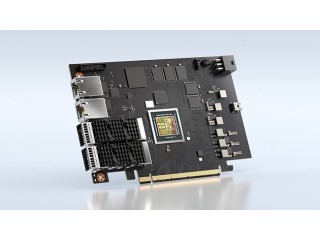The (DPU) is a new development for modern data centres, by offloading, accelerating, and isolating a broad range of advanced networking, storage and security services. This provides a secure and accelerated infrastructure for any workload in any environment, from cloud to data centre to edge
Details
Datacentre Infrastructure Chip
The BlueField-2 data processing unit (DPU) is the world’s first data centre infrastructure-on-a-chip optimised for traditional enterprises’ modern cloud workloads and high performance computing.
It delivers a broad set of accelerated software defined networking, storage, security and management services with the ability to offload, accelerate and isolate data centre infrastructure.
Ethernet or Infiniband
With its 200Gb/s Ethernet or InfiniBand connectivity, the BlueField-2 DPU enables organizations to transform their IT infrastructures into state-of-the-art data centres that are accelerated, fully programmable, and armed with “zero trust” security to prevent data breaches and cyber attacks.
DOCA
The new NVIDIA DOCA SDK enables developers to build applications on DPU-accelerated data center infrastructure services, much like the NVIDIA CUDA® programming model enables developers to build GPU-accelerated applications.
| Manufacturer | nvidia |
|---|---|
| Part No. | NVIDIA BLUEFIELD-2 DPU |
| End of Life? | No |
| Advanced Network Features |
|
| Bandwidth | Max 200Gb/s |
| Channels | 16 million I/O channels |
| Host OS Support | RHEL, CentOS, Windows, FreeBSD, VMWare, OFED, WinOF-2 |
| I/O Virtualisation |
|
| PCI Slot(s) | Gen 3.0, 2.0, 1.1 |
| Ports | Up to 200Gb/s connectivity per port |
| Port-Port Latency | Sub 600ns latency |
| IEEE Compliance |
|


